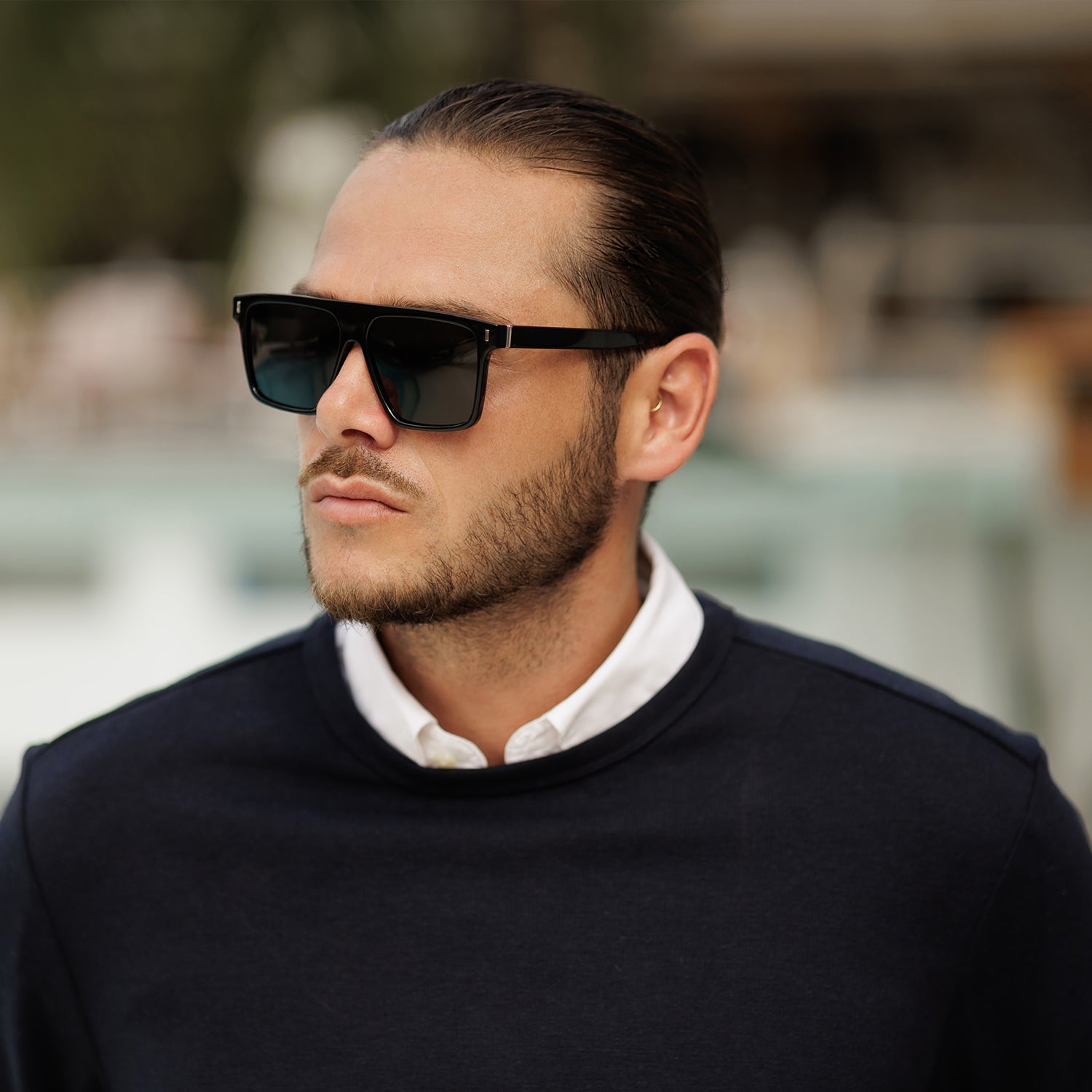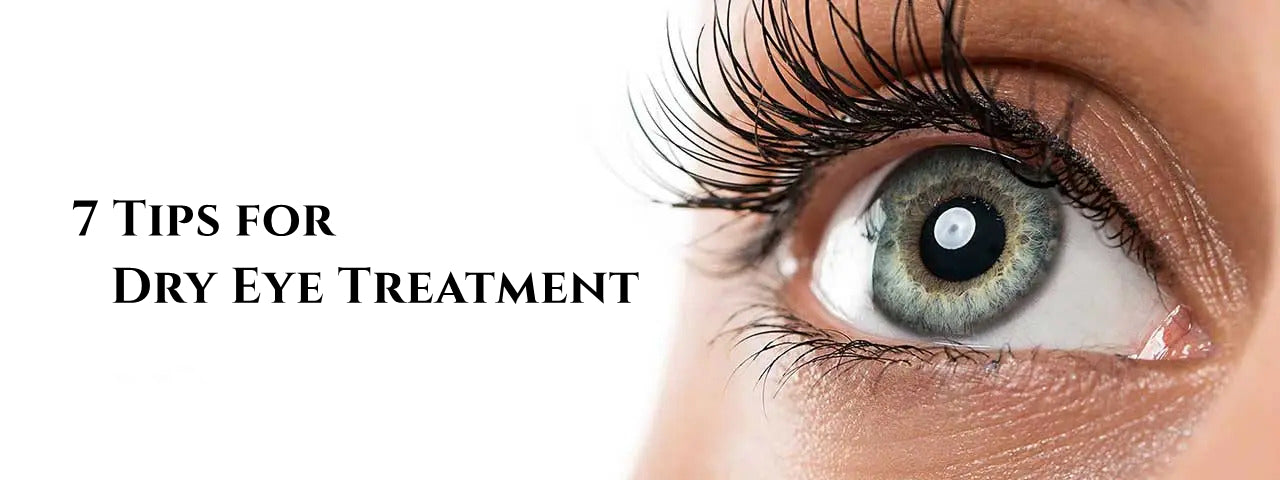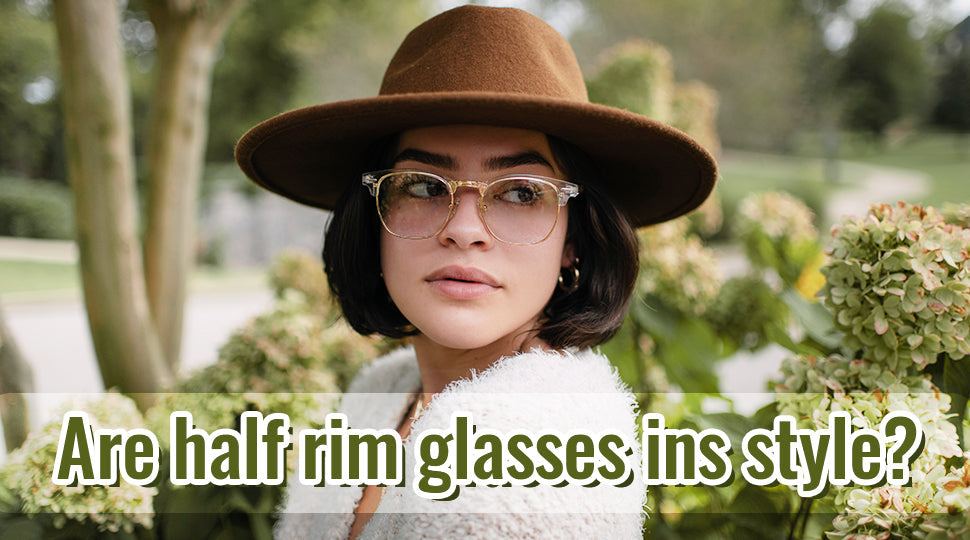
Everything You Must Know About a Myopia Frame
A Comprehensive Guide to Myopia Frame?

Sunglasses serve not just as a fashion accessory or protection from external elements such as dust, blue light, etc., but also help hide our flaws. Wearing the right kind of sunglasses can help us look more attractive. If we have a broad nose, wearing the right frames can help make our noses look smaller. Similarly, we can use sunglasses with a myopia frame to hide and help our condition if we have myopia or near-sightedness.
What Is Myopia Frame and How Does It Help?
A myopia frame is designed to treat near-sightedness, often known as myopia. Myopia is when distant items look blurry, but close ones appear clear. This happens when the eyeball is elongated or the cornea, the curved front surface of the eye, has too much curvature.
This makes the light that enters the eye not focused on the retina, which is at the back of the eye, but in front of it. This causes distant objects to appear blurred. Wearing a myopia frame helps correct this problem. It bends the light that enters the eye to focus on the retina.
A myopia frame is also called a plus lens or plus power glass. The degree of correction needed is measured in diopters, and a myopia frame typically has a diopter range of +1.00 to +3.50.
Signs You Need Myopia Frame

If you find yourself squinting to see distant objects, if you frequently lose your place while reading, it may be time to consider getting a myopia frame. Other signs that you may need a myopia frame include headaches, fatigue, and difficulty driving at night. If you experience any of these symptoms, make an appointment with an eye doctor to get your vision checked. They can determine if a myopia frame is right for you.
What to Consider When Buying Myopia Frames?
When buying myopia frames, there are several things you need to keep in mind. Here I list some of the most important factors to consider:
Frame Fit
Regarding the myopia frame, there are a few things to remember to find the perfect fit. First and foremost, the myopia frame should sit comfortably on your nose without slipping or causing discomfort. The arms of the glasses should also rest easily on your ears, and the frame should not be so loose that it constantly slides down your face.
In addition, myopia frames come in various shapes and sizes, so it's essential to try on a few different styles before deciding. Ultimately, the right myopia frame will provide a comfortable and stylish fit that helps you to see clearly.
Frame Material
When choosing myopia frames, it is essential to consider the material. The most common frame materials are metal, plastic, and wood. Metal frames are often made of titanium or stainless steel. Plastic frames are usually made of acetate or nylon. Wood frames are typically made of bamboo, maple, or walnut.
Each material has its pros and cons. For example, metal frames are solid and durable but can be expensive. Plastic frames are less costly but can break easily. Wood frames are stylish but may not be as durable as metal or plastic frames. Ultimately, your best frame material depends on your individual needs and preferences.
Lens Material
There are three main types of myopia frames: Glass, plastic, and polycarbonate. Glass is the most traditional lens type and offers the best clarity. However, it is also the heaviest and most fragile option. Plastic lenses are lighter than Glass and less likely to break, but they can easily scratch. Polycarbonate lenses are made from a shatter-resistant material and are lighter than Glass and plastic. They are a good choice for active people or those who want a durable lens.
Another factor to consider is the thickness of the lens. Thin myopia lenses offer better clarity and decreased distortion but are more fragile than thick lenses. Thick myopia lenses are more durable but may cause some distortion around the edges of the lens.
Tint
Regarding myopia frame, tint is one of the most critical factors. Tint can help to reduce glare and eyestrain, making it easier to see clearly. It can also help to protect your eyes from harmful ultraviolet rays. However, not all tints are created equal. Some tints can make it more challenging to see, so it's essential to choose a tint that is right for you. If you're unsure which tint to choose, ask your optometrist for help. They will be able to recommend a tint that will work well for your myopia frame.
What Are the Consequences of Not Wearing Myopia Frame?
If you have a near-sightedness problem but don't wear a myopia frame, you may experience several consequences. For starters, your vision will be impaired. You'll have difficulty seeing clearly and may even suffer headaches or eye strain. Moreover, your eyes will be more susceptible to damage from ultraviolet rays. Without a myopia frame, you'll also be at a greater risk of developing cataracts or other eye conditions.
Additionally, not wearing a myopia frame can also cause social problems. For instance, you may have difficulty reading facial expressions or participating in activities that require good vision. Not wearing a myopia frame can significantly impact your quality of life.
Words of Wisdom
You may wonder if a myopia frame is a prescription glass with bulky and outdated frames that make you seem older. But it is just your judgment. Myopia frames come in many styles, including rimless, semi-rimless, full-rim, and cat-eye. You can also get a myopia frame in different colours and materials, such as plastic, metal, or wood.
However, picking a style that flatters your face shape is essential when choosing a myopia frame. Eventually, the myopia frame is a lifesaver for people suffering from near-sightedness. So if you are one of those people, get a myopia frame immediately!






